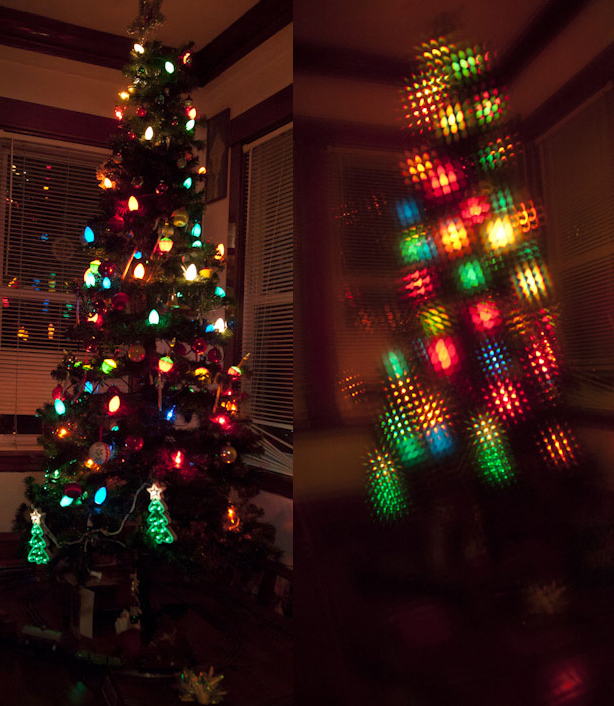

This is a single beam geometry! And it almost has to be, considering how large spatial filters are.
Overview of the layout. Looking over the shoulder of a 20 mW Uniphase He-Ne (bought from Phil Bergeron, 142laser on the forum, get yours now, they are bargains!) whose beam is spread by a Gaertner spatial filter, and travels down the table to the mirror stack, which is not visible in this shot, which breaks the single beam into two and sends the beam back across the table to the plateholder, which is the silvery PanaVise with a piece of glass in it..
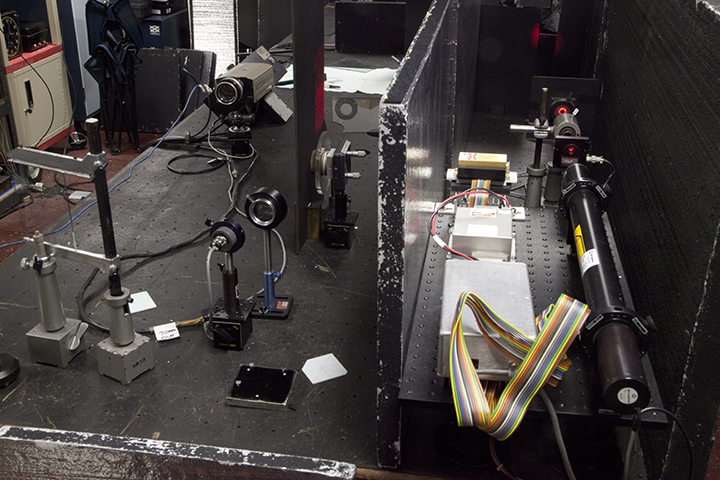
The mirror stack below is the key to the set up. A pair of 4 by 5 inch Edmund Scientific front surface mirrors are attached to ThorLabs mirror mounts, and are arranged so that they each reflect the top and bottom half of the spread beam to join them on top of each other at the plate holder.
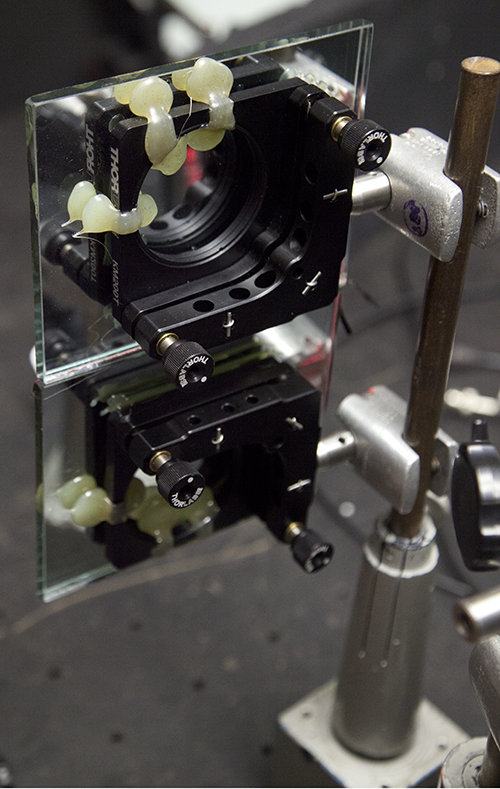
Here is the mirror stack in context of the set up. At the left is the laser and spatial filter, sending an expanding beam at the stack, which rflects it back toward the 70mm Film Transport. The old school RCA Closed Circuit Television Camera looks at the Film Transport so that the holographer can look at its Monitor to make sure both beams are there while exposures are being made, as the table is completely enclosed by styrofoam panels during exposures.

The spatial filter behind the mirror stack and a little mirror below the CCTV Camera are part of a different set up.
Here the view is toward the Mirror Stack. On the left the camera is focused on the mirrors themselves, so the film transport is out of focus. It's interesting how the speckle size is so much bigger than in the right image, which is focused on the Film Transport's virtual image in the mirror stack. The size of the objects changes with their focus. This image also shows that light from both mirrors meets up at the film plane.
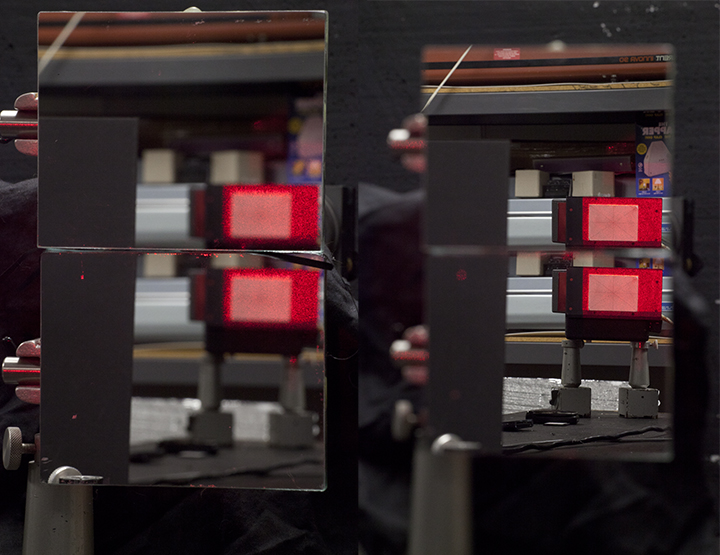
The virtual images of the single spatial filter as seen from plateholder position looks like a pair of spatial filters aimed at it.
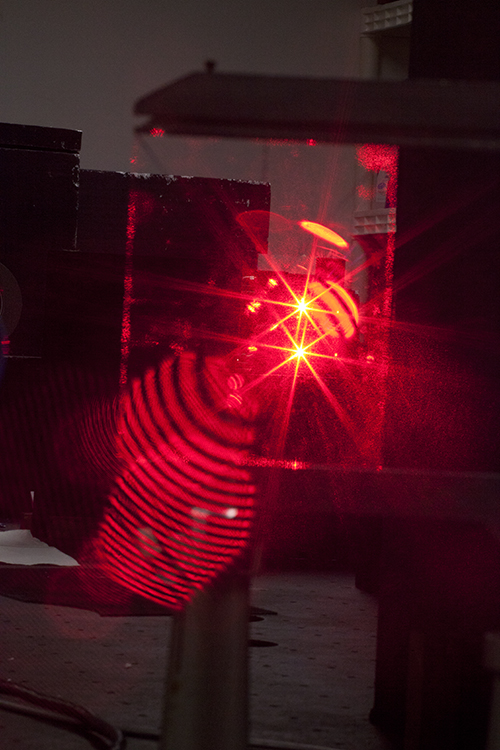
Here is my trusty Newport 820 Power Meter's Detector Head placed at the film plane. The sensor is parallel to the plate as it should be, as the silicon detector and holographic materials are both square law detectors, and the electronic one should see exactly what the chemical one sees!

Here is the Control Cart. You can see the image of the Film Transport's Film Gate on the monitor to ensure the beams are there during exposure.
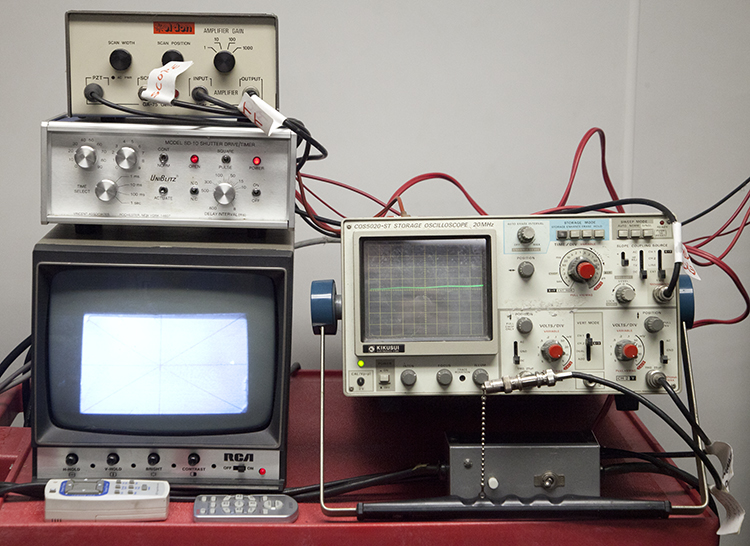
The gratings you received are doubly exposed; the film holder transport had to be rotated 90 degrees from a horizontal to a vertical orientation. This also meant that the film had to be rewound and restarted, hopefully in the same exact frame.
But I didn't have any luck with that, in fact I missed the mark by 4 sprocket holes. This is a feature, not a bug, as you can cut the film off the roll so that both of your eyes can look through doubly exposed areas. If I had hit the mark, then there would be no holographic information in the gaps between frames. Zap a laser beam through the doubly-exposed grating and you can see multiple orders in both x and y directions. Passing the beam through the singly-exposed underlaps and you can see more orders, but in only one dimension. And you can see some non-linearities in the distribution of power in the orders.
Some gory details: Intrabeam angle about 1.2 degrees. Exposure times 70 milliseconds.